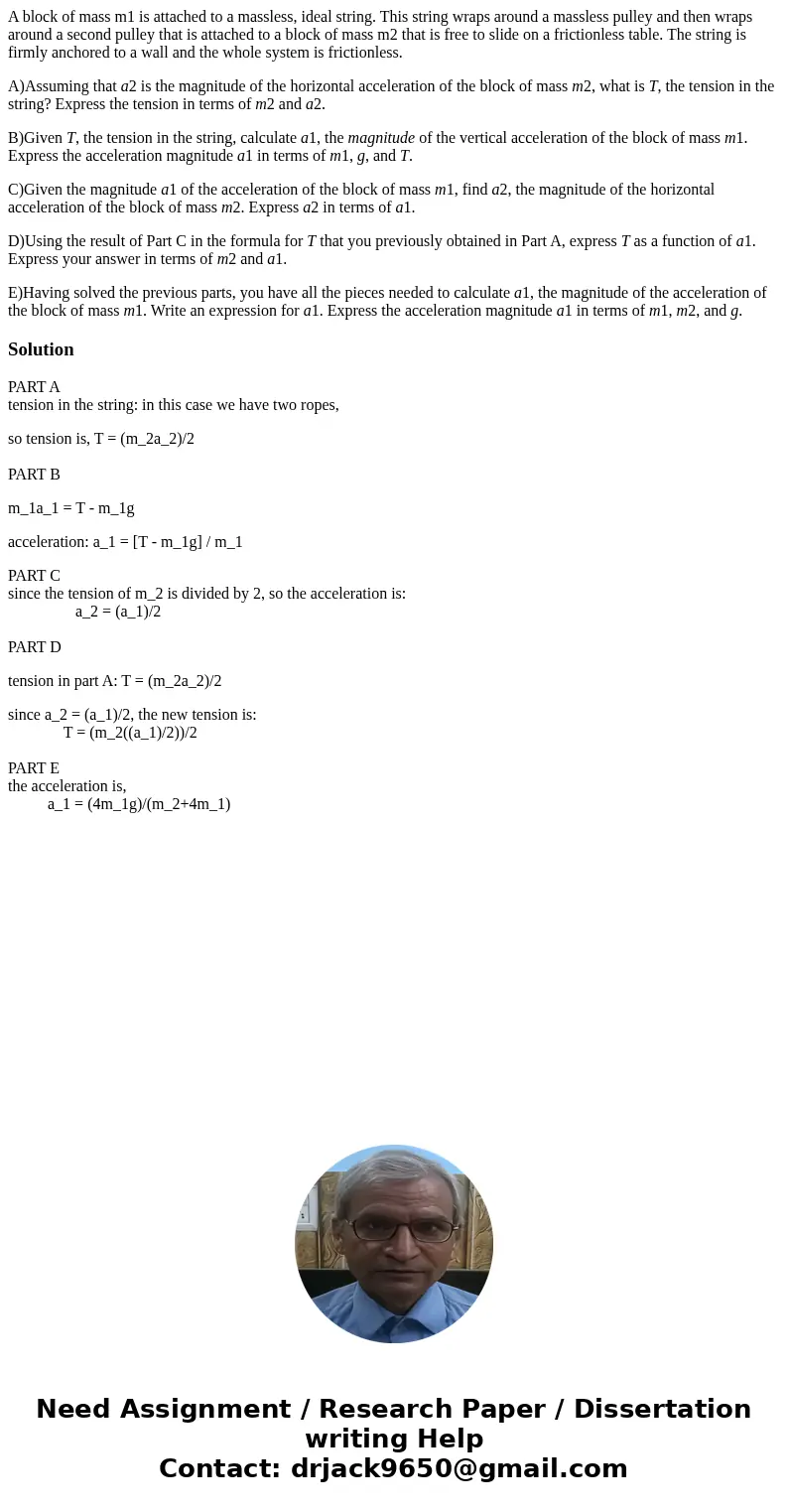A block of mass m1 is attached to a massless ideal string Th
A block of mass m1 is attached to a massless, ideal string. This string wraps around a massless pulley and then wraps around a second pulley that is attached to a block of mass m2 that is free to slide on a frictionless table. The string is firmly anchored to a wall and the whole system is frictionless.
A)Assuming that a2 is the magnitude of the horizontal acceleration of the block of mass m2, what is T, the tension in the string? Express the tension in terms of m2 and a2.
B)Given T, the tension in the string, calculate a1, the magnitude of the vertical acceleration of the block of mass m1. Express the acceleration magnitude a1 in terms of m1, g, and T.
C)Given the magnitude a1 of the acceleration of the block of mass m1, find a2, the magnitude of the horizontal acceleration of the block of mass m2. Express a2 in terms of a1.
D)Using the result of Part C in the formula for T that you previously obtained in Part A, express T as a function of a1. Express your answer in terms of m2 and a1.
E)Having solved the previous parts, you have all the pieces needed to calculate a1, the magnitude of the acceleration of the block of mass m1. Write an expression for a1. Express the acceleration magnitude a1 in terms of m1, m2, and g.
Solution
PART A
tension in the string: in this case we have two ropes,
so tension is, T = (m_2a_2)/2
PART B
m_1a_1 = T - m_1g
acceleration: a_1 = [T - m_1g] / m_1
PART C
since the tension of m_2 is divided by 2, so the acceleration is:
a_2 = (a_1)/2
PART D
tension in part A: T = (m_2a_2)/2
since a_2 = (a_1)/2, the new tension is:
T = (m_2((a_1)/2))/2
PART E
the acceleration is,
a_1 = (4m_1g)/(m_2+4m_1)

 Homework Sourse
Homework Sourse